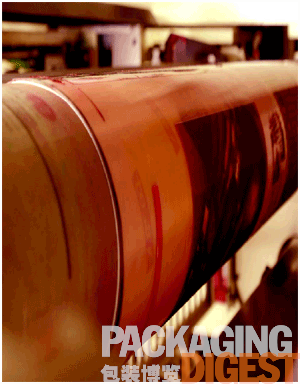Printing: Digital Age

At a global digital labeling event hosted by HP Indigo, paper suppliers and other speakers explored the key needs of brand managers and how digital print labels serve customers. Among these requirements are: Labels and packaging must be lively in style, capable of generating more creativity and bringing innovations to some paper suppliers; more versions and constant changes; and taking products to market in a shorter time Remote proofing capabilities; more personalized products, more changes. All of the above transformation into digital label printing is a practical example of short live, faster changeovers, greatly reduced order-to-delivery times, and greatly improved supply chain management.
According to the report of the Pira Intl. Institute in the UK, the customized packaging and label printing market will have an explosive growth. In 2004, the global market grew by only 1%. This figure is expected to grow rapidly to 23% by 2012.
Another study confirmed this: The installation rate of digital label printers will quadruple over the next four years. Boston's State Street Consultants estimates that in the United States and Canada in 2009, such presses will reach 860 - while other label printing methods, such as gravure, sheetfed offset, screen printing, flexographic printing machines The number of installations will decrease.

What difficulties must be overcome in digital label printing to make these market forecasts a reality? There are four challenges that need to be addressed: consistency in the printing of brand logos; the need to use undertones on label substrates; the consistency of inks and primers in abrasion tests; and the cost of the labels themselves.
Leading figures in the industry and multiple suppliers have mentioned these challenges. And with the solid foundation of digital labels, it will open the door to more extensive application of this digital technology in the field of flexible packaging and folding cartons.
Shorewood Packaging Caught Pre-Check Software "Converting" Editor: Melissa Larson
More than two years ago, New York City's folding carton supplier Shorewood Packaging (a division of International Paper) clearly stated that it was decided to use digital processes to pass the digital willingness from the customer to the supplier. Many of its customers have sought help from color printers and prepress suppliers to make their digital files—usually the TIFF/IT-P1 format. Kathleen Blakistone, head of business development at Shorewood Packaging, estimates that about 75% of all accepted documents can be considered "prepress processes are ready."
You may think that this number will continue to rise since then, because the digital process concept has become popular among Shorewood Packaging's customer base. But the fact is not the case. In fact, Blakistone said that the number of “good filesâ€â€”files that can be prepared for operation without any modification—declines rather than rises.
There are many reasons behind the trend. Indeed, fewer and fewer companies are looking for professional prepress companies when making documents. As a result, the companies that can provide Shorewood Packaging with standards such as TIFF/IT-P1 files have also been greatly reduced.
Recently, manufacturers have received a large number of digital files in different formats, including PDFs and files for localized applications. "What I really want to say is that the documents we have received are getting worse. We also need to communicate with those documentaries who have no concept of prepress in their brains." Blakistone said.
"I really have a feeling of losing files with me." Blakistone said, "In the past, when you went to film, the price was so expensive, so you have to confirm that the file is accurate."
Shorewood Packaging deployed Canada's MarkCheck Software FlightCheck Professional, an independent preflight software that can determine the format of a file from a range of formats, including recognized Standard format and general localized application format.
Screening all received files in this program will allow Shorewood's prepress team to catch any potential issues. If no font is placed in the file or there is a wrong RGB image, the manufacturer will warn customers who may choose to have the file modified by Shorewood or internally adjust the file and resubmit a new file.
Files detected by preflight detection are sent to the RIP prepress to create a soft PDF proof. Blakistone said soft proofing is a win-win alternative for Shore-wood and its customers. Many customers are very satisfied with the idea of ​​creating an electronic proof, and everyone appreciates the company's delivery time.
“We like to concentrate on providing value-added services to our customers.†Blakistone said, “When we use a tool like soft proofing and digital asset management to deliver a task one day ahead of time, we really provide value-added services.â€
According to Blakistone, although the prepress process established by Shorewood Packaging is flexible from any perspective, it is still not perfect. He proposed that the next technological implementation tool should be to help the factory perform and manage document revisions. Database management solutions that better track job ticket information.
The supplier is also considering automating its preflight by implementing FlightCheck Online, an online version of FlightCheck Professional. "We are starting to turn to the overall electronic job submission and production process." Blakistone said with great pride.
Source of information: packagingdigest china